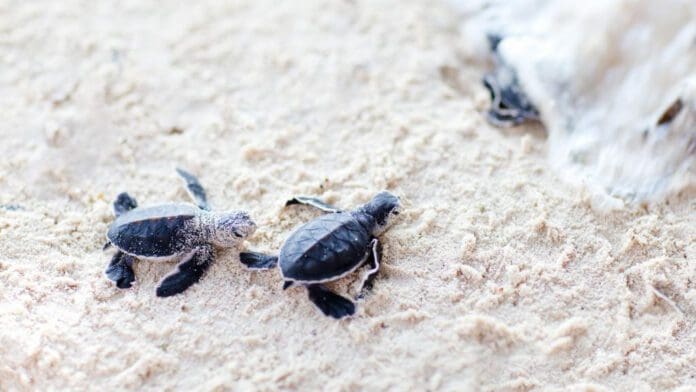South Walton Nesting season arrives on our coasts for sea turtles and waterbirds.
Nesting season has started for both sea turtles and waterbirds in the Sunshine State. The Florida Fish and Wildlife Conservation Commission (FWC) reminds people they can help protect vulnerable nesting sea turtles and waterbirds while visiting Florida’s coastal habitats this spring and summer.
Sea Turtle and Waterbird Nesting Awareness Facts
Because our state’s shorelines are critical for sea turtle and waterbird nesting, beachgoers can greatly impact their nesting success. To help nesting sea turtles and waterbirds, give them space, minimize disturbances, and keep beaches clean, flat, and dark.
Obstacles on the beach can prevent sea turtles from nesting as they crawl across the sand to lay their eggs. Trash, holes in the sand, and other obstacles can also prevent sea turtle hatchlings from reaching the water once they emerge from their nests. Food scraps attract predators, such as raccoons and crows, that prey on sea turtle hatchlings, shorebird eggs, and chicks. Littering on beaches can entangle sea turtles, birds, and other wildlife. Beachgoers can help our native wildlife by stashing all trash, filling in human-made holes in the sand, and removing boats, beach toys, and furniture from the beach before each sunset. Fishing lines can be deadly to sea turtles, waterbirds, and other wildlife, so be sure to dispose of it properly. To find a monofilament recycling station near you, visit mrrp.MyFWC.com.
Beachgoers Can Help Sea Turtles with Lighting Awareness on The Beach
Any lighting can misdirect and disturb nesting sea turtles and their hatchlings, leading them away from the ocean and toward potential danger. Beachgoers should use natural starlight to see on the beach at night and avoid using flashlights or cellphones. Anyone living along or visiting Florida beaches can do their part by putting porch, parking, or deck lights out and closing curtains after dark to avoid harming nesting and hatchling sea turtles on the beach. If lighting remains visible from the beach, be sure it is long, low, and shielded.
Don’t Get Too Close to Sea Turtles Nesting and Hatchlings
Getting too close (50 feet or less) to nesting sea turtles can cause them to leave the beach before they complete nesting. Remember – harming or disturbing nesting sea turtles and their nests, eggs, and hatchlings is illegal. Shorebirds, seabirds, and wading birds also need plenty of space to prevent them from flushing from their breeding sites, leaving vulnerable eggs and chicks exposed to the elements and predators. Egg temperatures can increase to lethal levels after just a few minutes of direct sun exposure. Shorebirds and seabirds nest in shallow scrapes in the sand, and their eggs and chicks are well-camouflaged, making them vulnerable to being stepped on unless people look out for them and avoid walking through flocks of birds.
In general, it is best to keep at least 300 feet from nesting birds and avoid walking through birds’ flocks or entering posted areas. Pet owners can also help by keeping dogs at home or on a short leash and away from wildlife on pet-friendly beaches.
Support the Friends of South Walton Sea Turtles: check out Theo!
Theo – A Little Turtle on a Big Mission
Theo the Turtle is here to save the threatened sea turtles of South Walton, Florida! Help support the cause—a portion of every Theo purchase goes directly to the charity.





